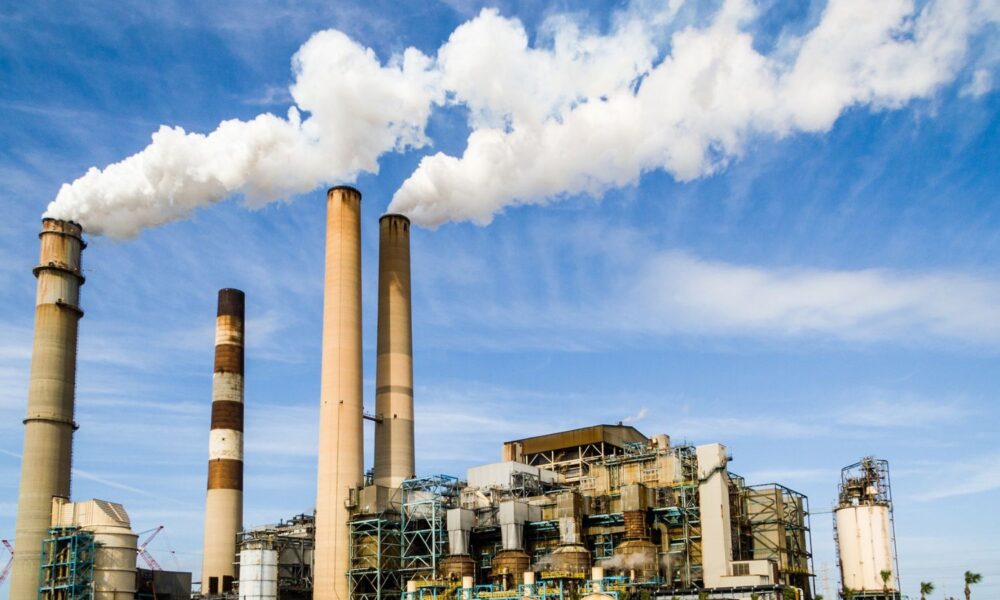As of today, 79% of people in the US have been under extreme weather warnings of some kind or another since May 1. Record-setting heat, heavy rains, and wildfires scientifically linked to climate change are causing devastating and costly harm to people and communities across the country.
The destruction we see today is a direct result of decades of dependence on fossil fuels, enabled by decades of deception and obstruction on the part of the fossil fuel industry, and prolonged by decades of inaction on the part of policymakers who have been in their thrall. A rapid reduction in global heat-trapping emissions is critical to limiting needless suffering.
The consequences of inaction will be devastating, such as the potential future frequency of extreme heat. For example, in a high-emissions scenario, by the end of the century, nearly 300 urban areas in the United States would experience an average of more than 30 days per year with a heat index above 105 degrees Fahrenheit. This is a level of heat currently experienced by just three cities in the nation—whereas rapid action to reduce emissions could spare more than 200 US cities from such frequent, severe heat.
As a major emitting nation, we in the United States have a responsibility and an opportunity to reduce climate pollution, which will require swift, committed action by every sector of the economy. Done right, a transformative shift to clean energy can also be a tremendous boon to community well-being, public health, and the economy.
An opportunity to directly tackle power plant carbon pollution
The power sector remains one of the nation’s largest sources of heat-trapping emissions, with about 60 percent of the electricity generated to keep our lights on coming from fossil fuels. Cleaning up the power sector is a foundational component of any and every viable path to meeting our nation’s climate targets, both to address emissions from fossil fuel-fired power plants, and to enable the cleaning up of large portions of the rest of the economy through widespread electrification.
In May, the Environmental Protection Agency (EPA) proposed standards for tackling carbon pollution from power plants. This is a necessary step in the right direction; strong power plant carbon pollution standards can complement recently passed clean energy incentives to help facilitate the shift to a cleaned-up power sector, and are required of EPA by the Clean Air Act.
As the proposed rule currently stands, however, it fails to fully reckon with the costs and consequences of carbon pollution from fossil fuel-fired power plants. The EPA must strengthen its standards for coal, oil, and gas plants to drive deeper emissions reductions on faster timelines—and it must extend requirements across a significantly expanded range of plants, including smaller gas plants and plants that operate less often.
The agency is constrained in the approaches it can use to set these standards due to a 2022 Supreme Court ruling, West Virginia vs. EPA, which largely limited the EPA to pollution controls that can be directly incorporated at power plants. This leaves the agency with a narrow set of options, all of which are forced to be premised on limiting the carbon pollution impact from the ongoing use of fossil fuels.
However—and pivotally—while the EPA is constrained in what approaches it can rely on to set these standards, states and utilities are not similarly constrained in how they comply. This is one of the most important aspects of the rule: Instead of installing carbon pollution mitigation measures at fossil fuel-fired power plants, states can instead adopt a more holistic, clean energy-centered approach to achieve equivalent emission reductions, prioritizing resources like wind, solar, and other forms of clean electricity as well as energy storage.
EPA must ensure the final rule equips states to take advantage of this flexibility. State compliance plans should be based on robust public input, and include requirements for meaningful, proactive engagement with frontline communities to center environmental justice.
Add your voice for stronger standards
Stronger power plant carbon pollution standards will not only help us meet climate goals but can also help mitigate the negative health impacts of a wide variety of other fossil fuel pollutants, which disproportionately harm communities of color and low-income communities.
Alongside landmark clean energy investments enabled by the Inflation Reduction Act, strong EPA power plant standards, implemented by states and utilities in a robust and equitable way, can set the United States on a promising path to transitioning to a clean and sustainable energy system. An approach built around clean electricity will further help ensure a cleaner, more reliable power system while also lowering costs for ratepayers.
We must also drive similar transitions across sectors throughout our economy, all while investing more in climate resilience to protect communities and infrastructure in the face of worsening climate impacts.
You can help push the EPA to set stronger standards for our power sector today. Add your name and send a comment to Administrator Michael Regan by August 8 to demand a rigorous final rule that drives deeper emissions reductions on faster timelines, applied to more power plants. Swiftly and drastically cutting emissions from this sector is a foundational requirement for giving us a fighting chance of avoiding the worst of future climate impacts—and the EPA power plant carbon standards can help achieve these cuts.

